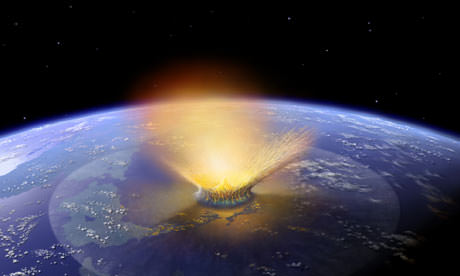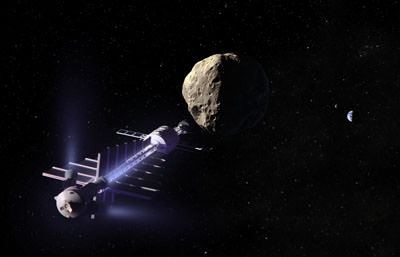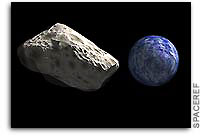M
MeteorWayne
Guest
scottb50":2c1q75ts said:Best bet would be to hit it head on or at whatever is the best angle with everything you have. If each nuke slows it enough you could escape being in the wrong place at the right time. All I meant was Comets and asteroids are different but basically the same thing, a fast body flying your way. A lot of asteroids may even have been Comets, or the remnants of them. No-one ever said a Comet had to be a certain size either, just solid and heavy.
scottb50, it is clear you need to do some actual research on the real physics involved before you make suggestions. You really dont understand the problems involved. Certainly comets can be any size, from a few meters (invisible and not a threat) to probably 100 km in diameter. Do you understand what we could do to affect the path of even a 20 km diameter comet (such as Hale Bopp) approaching at up to 72 km/sec? The answer is NOTHING! We could hit it with every nuke on the planet (never mind the logistical problem of how to get them all out to the orbit of Mars so there would be time to change the path) and the effect would me immeasurably small.
Comets can take 100,000 or more years to orbit the Sun, in 5000 years or so, we have recorded quite a few and the dispersal seems to be show they could come from anywhere at any time. maybe in 95,000 years we can say we have found and charted most of them.
Again, a reality check:
"The outer Oort cloud is believed to contain several trillion individual objects larger than approximately 1 km (with many billions with absolute magnitudes brighter than 11 - corresponding to ~20 km diameter), with neighboring objects typically tens of millions of kilometres apart"
We have detected NO objects in the outer Oort cloud.
We only detect comets when they enter the inner solar system and begin sublimating their ices, generally inside the orbit of Mars, though with larger, first time visitors sometimes the orbit of Jupiter.
It is 50,000-100,000 AU, the orbital period is 10 to 30 million years. We will NEVER have a complete inventory of the Oort cloud. It's completely unrealistic. With an orbit of 10 million years, that means the change in position is 13 arc seconds per century. Even assuming we could detect a dark 20 km sized object at 1-2 light years distance.
An asteroid might be good for an annual display, blow it up at the right time and every year you pass through it's remains.
Again, this has been shown to be a really bad idea, even if it was possible. First, shattering a 270 meter asteroid (such as Apophis) isnt feasible. And even if you do, instead of one object of 3x10^10 kg with an orbit you know, you create 10 of 3x 10^9 kg with orbits you can't predict, any of which could destroy half a continent? That makes sense to you? hattering an asteroid is NOT a good idea, even if it was possible.
You really need to do some research before spouting off ideas that have not been thought through









